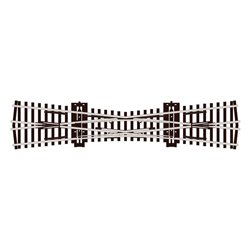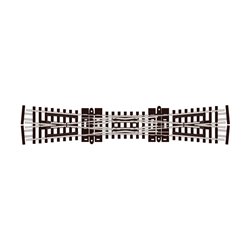Mainline Railways was a British model railway brand that operated between 1976 and 1983, introduced by Palitoy, the...
No products
Product successfully added to your shopping cart
There are 0 items in your cart. There is 1 item in your cart.
Search Tips
What is a slip?
Slips are often used in the real world on the approach to stations where space is limited but there is a necessity for many different routes to be available for trains to take.
A slip is your basic diamond shaped crossover with point blades attached so trains can be traditionally routed straight ahead or turn onto a converging track. This saves having to install two sets of points to do the same job and a happy consequence is the amount of space saved by not doing this.
There are different types of slips, single, double and outside slips.
- Single slips offer a route choice between straight ahead or join a converging track from one direction only.
- Double slips offer a route choice between straight ahead or join a converging track from either direction.
- An outside slip is more of a mini junction layout than a slip: they consists of a regular diamond-shaped crossover with point-work on the approaches allowing trains to switch to the converging track via a small section of track outside the diamond opposed to inside. These, however, are much rarer as they take up more space so are normally used for higher speed operation.
Slips and double slips are particularly useful for modellers because space is often at a premium. The disadvantage with them is that slips have more frogs than regular points, so if you are using slips with isolated frogs for DC operation, there are more of them in within a short distance for your trains to negotiate. This should definitely be a consideration if you are operating a lot of rolling stock with few pick-ups or smaller tank-engines as they may well stall.
Click here to receive the tips weekly in your mailbox. You can unsubscribe at any time.










